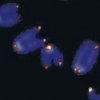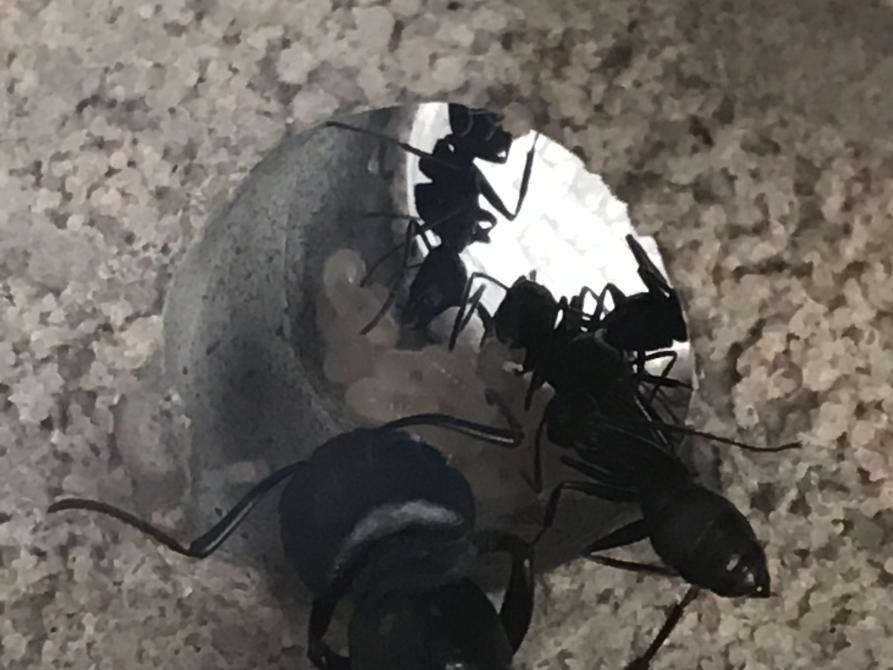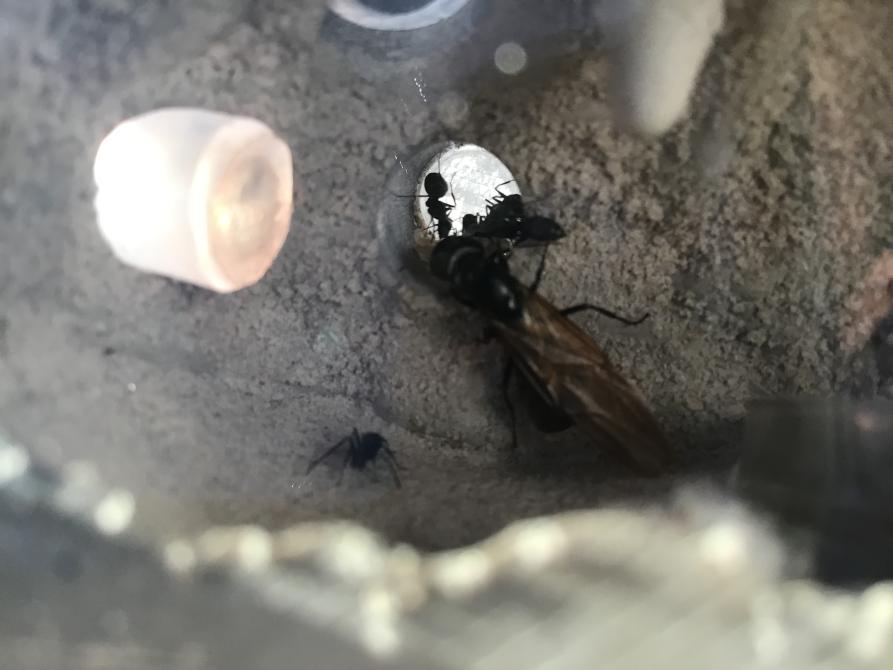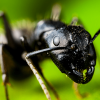- Formiculture.com
- Forums
- Gallery
- Members
- Member Map
- Chat

DDD101DDD's Camponotus Pennsylvanicus
Started By
DDD101DDD
, Sep 29 2019 7:34 AM
211 replies to this topic
#41
 Offline
-
Posted November 3 2019 - 3:40 AM
Offline
-
Posted November 3 2019 - 3:40 AM
One thing I recommend is getting a cheap digital thermometer to take some of the guess work out of the matter. I think your garage should definitely get cool enough eventually. Good luck with the diapause.
"The ants are a people not strong, yet they prepare their meat in the summer." Prov. 30:25
Keep ordinary ants in extraordinary ways.
Keep ordinary ants in extraordinary ways.
#42
 Offline
-
Posted February 1 2020 - 3:15 PM
Offline
-
Posted February 1 2020 - 3:15 PM
I should probably take these out around now, right?
He travels, he seeks the p a r m e s a n.
#43
 Offline
-
Posted February 1 2020 - 3:47 PM
Offline
-
Posted February 1 2020 - 3:47 PM
I haven't taken mine out, as Christmas is ~the half way point of diapause.
But it depends when you put yours in
There is a important time for everything, important place for everyone, an important person for everybody, and an important ant for each and every ant keeper and myrmecologist alike
#44
 Offline
-
Posted February 1 2020 - 4:24 PM
Offline
-
Posted February 1 2020 - 4:24 PM
I put mine in on October 10th, it's been nearly 3 months.
He travels, he seeks the p a r m e s a n.
#45
 Offline
-
Posted February 1 2020 - 5:11 PM
Offline
-
Posted February 1 2020 - 5:11 PM
If you wanted to give them their full five month hibernation period, then you could wait till early March. But you could certainly take them out now.
- DDD101DDD likes this
"God made..... all the creatures that move along the ground according to their kinds (including ants). And God saw that it was good. Genesis 1:25 NIV version
Keeping:
Tetramorium immigrans Camponotus vicinus, modoc, novaeboracensis, herculeanus
Formica pallidefulva, argentea Solenopsis molesta
Formica cf. aserva Lasius brevicornis, neoniger
#46
 Offline
-
Posted February 1 2020 - 5:25 PM
Offline
-
Posted February 1 2020 - 5:25 PM
I left my Lasius in for 4 months and 8 days. Actually just took them out today!
Hi there! I went on a 6 month or so hiatus, in part due, and in part cause of the death of my colonies.
However, I went back to the Sierras, and restarted my collection, which is now as follows:
Aphaenogaster uinta, Camponotus vicinus, Camponotus modoc, Formica cf. aserva, Formica cf. micropthalma, Formica cf. manni, Formica subpolita, Formica cf. subaenescens, Lasius americanus, Manica invidia, Pogonomyrmex salinus, Pogonomyrmex sp. 1, Solenopsis validiuscula, & Solenopsis sp. 3 (new Sierra variant).
#47
 Offline
-
Posted February 1 2020 - 5:26 PM
Offline
-
Posted February 1 2020 - 5:26 PM
It seems Formicinae do worse without hibernation than Myrmicinae. Just an observation.
- Ants_Dakota likes this
"God made..... all the creatures that move along the ground according to their kinds (including ants). And God saw that it was good. Genesis 1:25 NIV version
Keeping:
Tetramorium immigrans Camponotus vicinus, modoc, novaeboracensis, herculeanus
Formica pallidefulva, argentea Solenopsis molesta
Formica cf. aserva Lasius brevicornis, neoniger
#48
 Offline
-
Posted February 1 2020 - 5:57 PM
Offline
-
Posted February 1 2020 - 5:57 PM
Ok, I'll take them out in about a month then.
He travels, he seeks the p a r m e s a n.
#49
 Offline
-
Posted February 2 2020 - 8:20 AM
Offline
-
Posted February 2 2020 - 8:20 AM
I take my Camponotus out when it's consistently spring like ( and all the natural colonies are waking up too). Worked amazing- took my colony out, and within an hour they were already fully active.
- ANTdrew and DDD101DDD like this
There is a important time for everything, important place for everyone, an important person for everybody, and an important ant for each and every ant keeper and myrmecologist alike
#50
 Offline
-
Posted February 2 2020 - 12:49 PM
Offline
-
Posted February 2 2020 - 12:49 PM
i took mine out today after the 3 month mark, a little early but temps here are warmin up quick, its 55 in january in ohio
#51
 Offline
-
Posted February 15 2020 - 3:07 PM
Offline
-
Posted February 15 2020 - 3:07 PM
Eh, it's been a long time so I think I'll just take them out today.
- ANTdrew likes this
He travels, he seeks the p a r m e s a n.
#52
 Offline
-
Posted February 22 2020 - 2:12 PM
Offline
-
Posted February 22 2020 - 2:12 PM
Hey DDD101DDD!
I have a C. Pennsylvanicus colony too in diapause (1st year). I’m in Ontario, Canada. They went in a bit later then I planned (beginning of November). I check them weekly but I’m getting concerned and am thinking I should take them out soon or maybe do what TarHeel does and take them out for 2-3 days to give them a chance to drink some sugar water. It’s just their gasters have “shrunk” quite a lot to the point were I feel they may be empty because I can no longer see the segments. I keep them at 9-10 degrees Celsius consistently. They have water and I can see they are leaving small drops of waste about 2-3 cm from where they are sleeping. I was planning on leaving them in diapause until the end of March.
What are you seeing with your ants, specifically the queen?
I have a C. Pennsylvanicus colony too in diapause (1st year). I’m in Ontario, Canada. They went in a bit later then I planned (beginning of November). I check them weekly but I’m getting concerned and am thinking I should take them out soon or maybe do what TarHeel does and take them out for 2-3 days to give them a chance to drink some sugar water. It’s just their gasters have “shrunk” quite a lot to the point were I feel they may be empty because I can no longer see the segments. I keep them at 9-10 degrees Celsius consistently. They have water and I can see they are leaving small drops of waste about 2-3 cm from where they are sleeping. I was planning on leaving them in diapause until the end of March.
What are you seeing with your ants, specifically the queen?
Keeper of:
Camponotus Pennsylvanicus
Temnothorax ambiguus/curvispinosus (Acorn ants)
Lasius Interjectus (Larger citronella ant) with host workers: L. Americanus
Check out my C. pennsylvanicus progress: https://imgur.com/user/CANant
🐜❤️♾
Camponotus Pennsylvanicus
Temnothorax ambiguus/curvispinosus (Acorn ants)
Lasius Interjectus (Larger citronella ant) with host workers: L. Americanus
Check out my C. pennsylvanicus progress: https://imgur.com/user/CANant
🐜❤️♾
#53
 Offline
-
Posted February 22 2020 - 3:17 PM
Offline
-
Posted February 22 2020 - 3:17 PM
Ants up here are used to spending five months in hibernation. You could wait, or take them out now.
- CANant likes this
"God made..... all the creatures that move along the ground according to their kinds (including ants). And God saw that it was good. Genesis 1:25 NIV version
Keeping:
Tetramorium immigrans Camponotus vicinus, modoc, novaeboracensis, herculeanus
Formica pallidefulva, argentea Solenopsis molesta
Formica cf. aserva Lasius brevicornis, neoniger
#54
 Offline
-
Posted February 22 2020 - 8:02 PM
Offline
-
Posted February 22 2020 - 8:02 PM
Update time.
I haven't seen them foraging yet, and aren't very active. However, I think they are done with diapause, because their larvae aren't as clumped together.


My queen's gaster is not quite as big as it was when she entered diapause, but she's not dead, so I guess that means something?
- CANant likes this
He travels, he seeks the p a r m e s a n.
#55
 Offline
-
Posted February 23 2020 - 5:37 AM
Offline
-
Posted February 23 2020 - 5:37 AM
Means she's hungry
Feed the colony some carbohydrates and proteins
- CANant and Ants_Dakota like this
There is a important time for everything, important place for everyone, an important person for everybody, and an important ant for each and every ant keeper and myrmecologist alike
#56
 Offline
-
Posted February 23 2020 - 9:01 AM
Offline
-
Posted February 23 2020 - 9:01 AM
Means she's hungry
Feed the colony some carbohydrates and proteins
I put honey in their outworld, but I haven't seen them forage yet.
He travels, he seeks the p a r m e s a n.
#57
 Offline
-
Posted February 23 2020 - 1:02 PM
Offline
-
Posted February 23 2020 - 1:02 PM
They will if they're hungry enough
also supply them with protein as the queen and brood need it
There is a important time for everything, important place for everyone, an important person for everybody, and an important ant for each and every ant keeper and myrmecologist alike
#58
 Offline
-
Posted February 24 2020 - 5:50 AM
Offline
-
Posted February 24 2020 - 5:50 AM
what I've noticed is that young c pennsylvanicus colonies don't really forage until they get more than 10 workers, you gotta put the food directly into the mini hearth or they won't get it(in my own experience)
- DDD101DDD likes this
#59
 Offline
-
Posted February 24 2020 - 4:37 PM
Offline
-
Posted February 24 2020 - 4:37 PM
They forage, just at night. They're nocturnal by nature. I once thought as you did, though. It really disturbed me.
- DDD101DDD, Da_NewAntOnTheBlock and Ants_Dakota like this
"God made..... all the creatures that move along the ground according to their kinds (including ants). And God saw that it was good. Genesis 1:25 NIV version
Keeping:
Tetramorium immigrans Camponotus vicinus, modoc, novaeboracensis, herculeanus
Formica pallidefulva, argentea Solenopsis molesta
Formica cf. aserva Lasius brevicornis, neoniger
#60
 Offline
-
Posted February 24 2020 - 4:41 PM
Offline
-
Posted February 24 2020 - 4:41 PM
so put the honey in and leave it in for a while (heck, leave it in until they eat it, not like it'll mold or anything), and use it as a kind of test. If they eat it, give them protein, if they don't you may have to give them some more time or move it closer to the nest entrance.
- DDD101DDD likes this
There is a important time for everything, important place for everyone, an important person for everybody, and an important ant for each and every ant keeper and myrmecologist alike
0 user(s) are reading this topic
0 members, 0 guests, 0 anonymous users



















